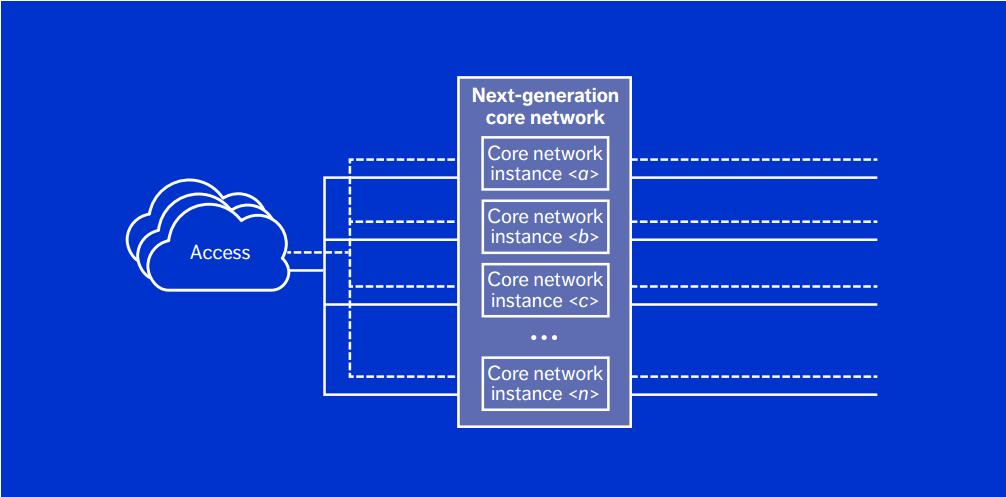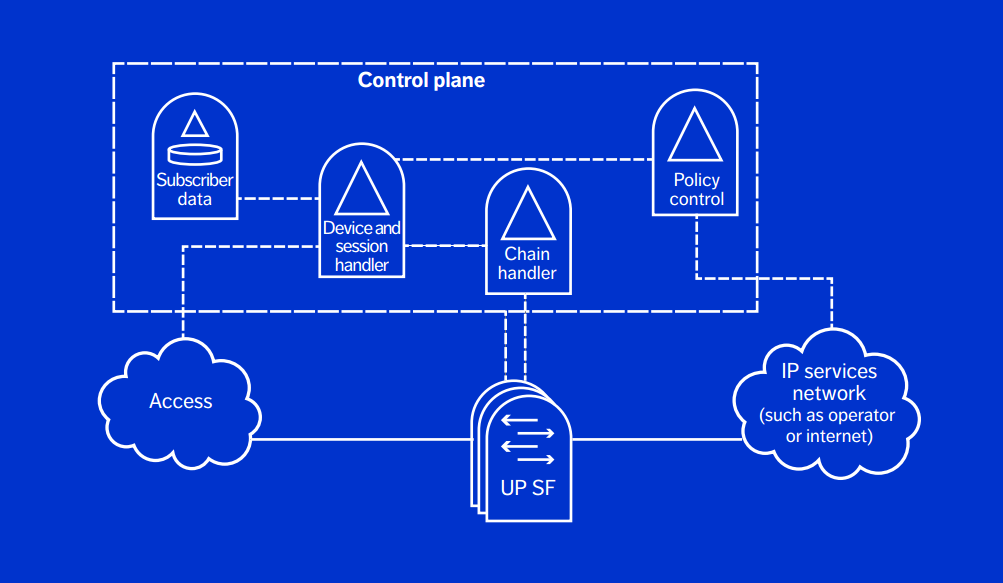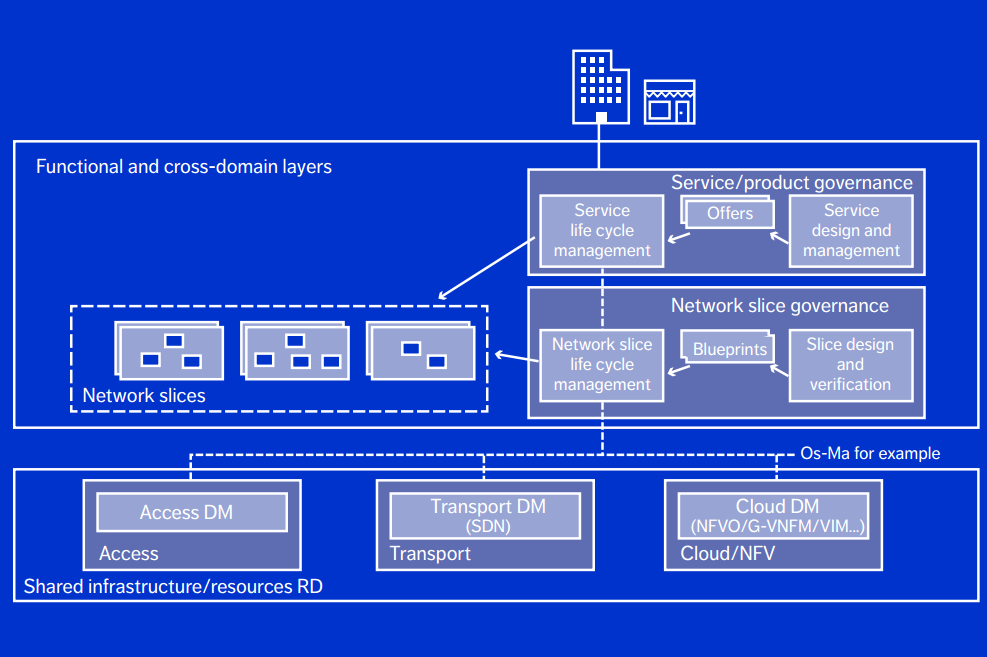5G core networks: flexibility opens up new business opportunities

Hello, Habr and dear habravchane! We decided to prepare a cycle of publications about 5G. Around the fifth generation cellular networks, which are scheduled to launch in 2020, an incredible amount of controversy is unfolding. Despite the fact that they are of great interest from the point of view of new business opportunities, outsiders still have many questions. For example, why do we need 5G, if 4G and even 3G networks are not so developed yet? We will try to provide answers to these questions and delve into the technology, usage scenarios and methods of building a new generation of mobile networks.
First, let's consider 5G in terms of the already mentioned business opportunities. Many applications will be based on 5G technologies: remote control of equipment, telemedicine, smart meters and content broadcast to a wide circle of mobile Internet users. The functionality of the new generation networks will allow companies from various industries to develop products and services, and quickly adapt them to changes in demand.
Flexibility is the main requirement that 5G networks must meet. Currently, technologies are being used that provide a high degree of flexibility to the network architecture, such as software-configured networks (SDN) and network function virtualization (NFV). Using these technologies, the network is divided into logical segments, each of which is configured in accordance with the parameters necessary for the operation of certain services.
')
Connecting to the Internet an increasing number of devices, as well as launching new applications and services, will impose a number of additional requirements for cellular networks. These include higher data transfer speeds, minimal network response time, QoS, ensuring protection of transmitted data, constant network availability, as well as specific parameters that differ from service to service. It is logical that the income from each of the services will be different, and operators have to ensure the economic efficiency of investments in each of them.
Under these conditions, the deployment time of services and the flexibility of service settings are important. Of course, the timing should be minimal, which means that it is necessary, first of all, to ensure the dynamic operation of the 5G backbone network. To this end, you will need to test many possible scenarios of its work.
5G core concept
The 5G core network should be the basis for the work of many new business applications and still maintain the existing services, such as, for example, the mobile Internet. In addition, the core network of the fifth generation must support the joint operation of multiple access technologies and the transmission of incoming and outgoing traffic generated by a mass of devices of various types. This means that when designing a core network, it is necessary to provide for the sharing of resources by a variety of applications and to take into account differences in the needs of different industries.
Not only the backbone network should be flexible, but the entire communication system. The core of the fifth generation network must have a modular, highly elastic architecture and support network function virtualization (NFV), software configured networks (SDN) principles and protocols, dynamic network resource orchestration technologies, and ensure interoperability with all possible types of access: LTE, Wi-Fi and others. At the same time, all new services and options should be brought to the market as soon as possible, and from the moment the request is submitted until the activation of the service the minimum time should pass.
High level architecture
Network flexibility is provided by network slicing, which breaks one physical network into several layers, each of which has its own settings, adapted to a specific service. Thus, expenses are reduced, efficiency and flexibility of future services is provided.
Segmentation is done through the use of NFV and SDN technologies. In order for a particular individual network segment to ensure efficient operation of a specific set of services, it must be tied to various infrastructure elements, including VPN, cloud services and access technologies, as well as via VNF — to backbone network resources.
The figure below shows a variant in which logically separated segments and isolated systems with different architectures are used, while still being able to use common functional components. One segment is designed to provide mobile broadband access (MSSD) services and provides network access to devices with LTE, Evolved LTE and NX technology (a new type of radio access that will be developed for use in fifth-generation mobile networks. Currently, requirements for the standard of a new type of radio access). The other segment is designed to work with industry applications and includes an optimized level of control of the core network and a simplified level of user data, and also supports various authentication schemes. When operating simultaneously, these two segments provide support for a range of services and give the operator the opportunity to bring new products to the market while maintaining the level of economic efficiency.

Network segmentation reduces the business risks associated with the launch of new services, since problems in one segment do not affect the functioning of services for which another segment is responsible. In addition, the use of segmentation ensures trouble-free migration.
The network architecture should change when new communication standards emerge, and abandoning the approach in which all services are provided on the basis of a single network in favor of network segmentation simplifies this task. Using mechanisms such as the Dedicated Core Network (DCN) is one step in the right direction.
Separation of management and user data
To ensure the flexibility of the 5G network, it is necessary to implement various hardware, on the basis of which various functions are deployed in different physical network segments. Particular attention should be paid to designing the user data level, which should provide high bandwidth. For example, a scenario is possible in which most of the traffic requires only simple processing, and for this purpose, rather simplified hardware. However, the rest of the traffic may require more complex processing. Cost-effective scaling of user data per one band or several aggregated frequency bands is a key component of the 5G core network.
The possibility of separating the functions of the control level and the level of user data plays a key role in the architecture of the fifth generation core network. This separation allows you to scale the resources of control levels and user data independently of each other. Also, this separation allows to place resources of user data and control levels on different parts of the network. For example, a level of control can be placed on a central site, and thus simplified management and operation processes. The user data level can be distributed across several local sites, with the expectation that it is located as close as possible to the users. Thus, the signal transit time is reduced, and a smaller bandwidth is required for data transmission per unit time. This approach is well suited, in particular, for content caching, since in this case a smaller bandwidth is required for transmitting a certain amount of data between base stations.
Since the separation of control and user data is at the heart of the SDN concept, the flexibility of the 5G core network is significantly increased when using software-configured networks. The figure below shows that the level of user data may not depend on the location of the physical resources and the transport features of L2 and L3. Typical control level functionality includes location data management, policy negotiation, and session authentication. Thus, the separation at this level is natural.

User-level functionality can be deployed according to specific use cases. Since connectivity needs vary from scenario to scenario, creating unique settings for each of them will be most cost effective. For example, M2M connections have a small payload and mobility, while MWM services have large ones. MWB services can be broken down into several simpler services, such as streaming video and surfing the web, allowing them to be deployed as separate segments within a single layer. This approach ultimately helps to increase the flexibility of the core network.
Network management
Obviously, business development requires building a network with great flexibility, and network segmentation allows it to be achieved. However, the increase in flexibility can lead to complication of all levels of the system, and as a result, to the increase in the cost of operations and their stretching in time. This problem is solved by automation.
Network management should take into account the three main stages of the service life cycle: creation, activation and execution time:
• Creation of new services or customization of existing ones with a minimum time to market - allows, if necessary, breaking up a solution into components and quickly creating, executing and testing services and segments.
• Service activation with a minimum TTC indicator - allows you to automatically activate the service in the shortest time possible.
• Lead time - providing the user with the capabilities requested by him, monitoring the operation of the service and SLA, adapting to changing conditions, ensuring the scaling of new services, each of which must be fully automated.
The advantages of network segmentation, in which each segment has its own capabilities are supported by two levels of management functionality. One level is responsible for services and products, including B2B. The other layer is responsible for network segmentation as such. This is clearly shown in the following figure. Innovative proposals can be created by combining the functionality of different layers, where one segment will have low performance and high latency, and the other - high performance and low latency. Each innovative proposal will include a set of characteristics, such as SLA, business policies and control functions within the segment.

Service life management includes the development and creation of various types of network segments and services, as well as their activation, taking into account the specific needs of users, work monitoring and upgrade (if necessary). This requires a plan. It indicates which components need to be installed, which functions to activate, which configurations to create, and which resources to manage.
To launch a new service, a new network segment is created or, in some cases, the configuration of an existing one is changed. A segment can be managed independently or cover other resources, including both traditional (for example, EPC) and new types of architecture (for example, separation of control levels and user data). Network segments can have control functions, some of which can be controlled by the operator, and some - by the user. The management layer uses several systems and interfaces to create and configure resources. At the same time, flexibility plays a key role in the automation and orchestration of the system, and is achieved, for example, through the use of plug-ins.
Conclusion
Virtualization, network programmability and 5G usage scenarios will completely change the approach to network design and deployment. Network resources will never be grouped vertically again; instead, they will be located in different parts of the network, in close proximity to the location of users.
The 5G backbone network will have a high degree of flexibility that will allow it to serve a wide range of new business model needs, to support multiple access technologies, as well as a wide variety of services and devices.
Minimizing the costs of operators and industries that depend on network connectivity is the most important task that needs to be addressed when designing a flexible and dynamic network core. The main role will be played by SDN and NFV technologies, cloud technologies and analytical systems. Flexible backbone network and integrated network segmentation will add value to networks built on a common infrastructure.
This concludes the first chapter of the 5G story. Next time we will talk about the 5G transport networks and how to ensure their flexibility through the use of SDN technologies.
Source: https://habr.com/ru/post/281509/
All Articles